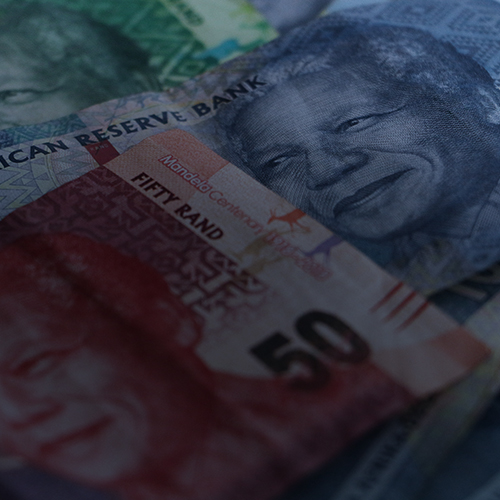Anchor’s coffee table economics note by Casey Delport will be distributed intermittently and is a collection of Casey’s opinions on key economic factors and events shaping markets globally and in South Africa (SA). It is essentially Casey’s thoughts and perspectives on the multiple dynamics at play in the global and local economy.
Executive summary
In this week’s edition, we highlight the following:
- The cost of Wall Street’s latest merry-go-round? 1 x US mini banking crisis. It has been another wild merry-go-round ride in the US financial sector as this past week witnessed the second and third-largest bank implosions in US history. While US banking regulators took emergency measures to stem contagion risk, many investors are left wondering what could happen next. The US Federal Reserve (Fed) already had a tough job trying to bring down historically high inflation, but thanks to SVB’s implosion, it now needs to balance its fight against inflation with preventing even more banking chaos.
- Global central banks’ gold rush: Who is leading the charge? Gold fever is not just a phenomenon of times past – in 2022, central banks snapped up gold at the fastest pace since 1967. So it is hardly surprising that in a year characterised by geopolitical uncertainty and rampant inflation, central banks opted to continue adding gold to their coffers at an accelerated pace. The question is, who is leading the charge, and why?
- South African (SA) businesses weigh in on gloomy prospects: If the latest RMB/BER Business Confidence Index (BCI) print is anything to go by, business confidence in SA is lower than our daily electricity output – naturally leading to a decline in private sector investment.
- SA inflation: We may be past the peak, but food prices remain sticky. Despite the easing of overall inflation, local food inflation has been increasing steadily thanks to the unfortunate negative feedback loop whereby consistent loadshedding is pushing up food prices across supply chains, thus further influencing these prices indirectly by adding to the risks that already affect the weak rand.
Find out more about the US Banking mini-crisis here.
The cost of Wall Street’s latest merry-go-round? 1 x US mini-banking crisis
It has been another wild merry-go-round ride in the US financial sector as this past week witnessed the second and third-largest bank implosions in US history. The collapse of Silicon Valley Bank (SVB) impacted US$175bn in deposits and US$209bn in assets. Whilst SVB folded quicker than an amateur attempt at a soufflé, two other institutions have also cratered within the last week. One of these, Signature Bank, is the third-largest bank casualty in US history. The other is Silvergate Capital, a bank that announced it would close operations and return assets to depositors. The bank was highly exposed to the crypto sector. The last time a major banking collapse took place, a flood of bank shutdowns followed. As such, financial regulators in the US are well aware that bank runs can quickly become a contagion of their own, so they moved fast to keep cash flowing to prevent a system-wide epidemic.
On 12 March, US officials announced that SVB and Signature Bank clients would get their full deposits back. The money comes from the Federal Deposit Insurance Corporation’s (FDIC) deposit insurance fund. The decision prompted comparisons to when ’ol Uncle Sam bailed out banking behemoths in 2008, angering many taxpayers who footed the bill to rescue bank shareholders and executives. However, this time around, it is slightly different. Unlike in 2008, SVB and Signature investors are taking a loss, and bank executives will be fired. “That’s how capitalism works,” US President Joe Biden said, referring to the fact that shareholders will not get a free pass for their proverbial financial soufflé flops. The US Treasury is also stressing that this time the recovery money is not from taxpayers but from an FDIC fund that banks pay into. However, it is still no free ride for US taxpayers – banks may have to shell out extra cash to the FDIC to make SVB and Signature clients whole, which could ultimately come out of their customers’ pockets.
The spillover effects do not stop here, however, as the ramifications of this past week’s events are far-reaching. Until recently, Fed Chair Jerome Powell had been pretty clear on the Fed’s intentions (despite the wildly see-sawing perspectives of financial markets of late) – it was going to continue hiking interest rates until inflation returned to typical 2% levels. But then SVB collapsed, and market pundits once again jumped on their familiar merry-go-round to search for a new direction. Given the current fragility of the banking sector, some economists predict that Powell will change his strategy to put the health of banks above all other considerations. However, we believe that another rate hike next week remains likely. This is because US inflation remains sticky at 6% YoY and well above the Fed’s target. Nonetheless, it remains difficult for the Fed to fight inflation without causing further chaos to the US financial system.
The bottom line
While US banking regulators took emergency measures to stem contagion risk, many investors are left wondering what could happen next. While it appears that we will not be reliving the 2007/2008 global financial crisis (GFC), we expect the US banking system to remain in the headlines for days and weeks to come. Whilst US banking regulators have shown that they are serious about preventing any future fallout, politically charged debates over the Fed’s decision to backstop depositors, the meaning(lessness) of FDIC insurance, regulation of mid-sized banks, and how to prevent another SVB-like collapse have already begun and will only grow louder. Concerningly, the Fed assessed banks that would pass a recession stress test last year. SVB and Signature Bank were not found on the list – take from that what you will. The Fed already had a tough job trying to bring down historic inflation. But thanks to SVB’s implosion, it now needs to balance its fight against inflation with preventing even more banking chaos.
Global central banks’ gold rush: Who is leading the charge?
Gold fever is not just a phenomenon of times past – in 2022, central banks snapped up gold at the fastest pace since 1967. In fact, nearly one-fifth of all the gold ever mined is held by central banks. You may be forgiven for wondering why central banks even buy gold in our twenty-first-century global finance system. Well, gold plays an important role in the financial reserves of numerous nations. First, it acts as a measure to balance foreign exchange reserves – central banks have long held gold as part of their reserves to manage risk from currency holdings and to promote stability during economic turmoil. Second, it helps to hedge against fiat currencies i.e., gold offers a hedge against the eroding purchasing power of currencies (mainly the US dollar) due to inflation. Third, it helps diversify portfolios, as gold typically has an inverse correlation with the US dollar. Gold prices tend to rise when the dollar falls in value, thus protecting central banks from volatility.
Regardless, these weighty record gold purchases of 2022 are in stark contrast to the 1990s and early 2000s, when central banks were net sellers of gold. There were several reasons behind this gold deluge, such as generally strong macroeconomic conditions and a downward trend in gold prices. In addition, due to strong economic growth, gold’s safe-haven properties were less valuable, and low returns made it unattractive as an investment. However, central bank attitudes toward gold started changing following the 1997 Asian financial crisis and the 2007/2008 GFC. Since 2010, central banks have actually been net buyers of gold on an annual basis. In an interesting turn of events, Russia and China (one can now argue that they form the US’ top geopolitical rivals) have been the largest gold buyers over the past two decades. Russia, in particular, accelerated its gold purchases after being hit by Western sanctions following its annexation of Crimea in 2014.
Of even more interest, of the list of nations who brought the most gold in 2022, the majority are emerging economies. These countries have likely been stockpiling gold to hedge against financial and geopolitical risks affecting their currencies, primarily the US dollar. Türkiye, which is experiencing 86% YoY inflation as of October 2022, was the largest buyer, adding 148 tonnes to its reserves. China continued its gold-buying spree, with 62 tonnes added in November and December 2022 amid rising geopolitical tensions with the US. Overall in 2022, central banks bought a record 1,136 tonnes of gold, worth around US$70bn. Meanwhile, a significant two-thirds or 741 tonnes of official gold purchases were unreported in 2022. According to most commodity analysts, unreported gold purchases will likely come from countries like China and Russia, looking to de-dollarise global trade to circumvent Western sanctions.
The bottom line
It is hardly surprising that in a year characterised by geopolitical uncertainty and rampant inflation, central banks opted to continue adding gold to their coffers at an accelerated pace. Of those leading the charge in this latest gold rush, the majority are emerging market economies most impacted by the recent heightened inflationary environment and rising geopolitical risks.
Find out more about why there are more banks than bankers in the US here.
SA businesses weigh in on gloomy prospects
If the latest RMB/BER BCI print is anything to go by, business confidence in SA is lower than our daily electricity output. The RMB/BER BCI indicates the percentage of business people in SA that are satisfied with prevailing conditions – thereby forming an indicator or proxy of business confidence. Business confidence can vary between 0 and 100, where 0 indicates an extreme lack of confidence, 50 is neutrality, and 100 indicates extreme confidence. The latest print declined further to 36 in 1Q23 from 38 in 4Q22. Ironically, the result could have been worse, given the severity of power outages and the associated drop-off in business activity. Nonetheless, the result is disappointing. Unsurprisingly, for the first quarter of this year, its record levels of loadshedding coupled with deteriorating household incomes have knocked manufacturing and retailer confidence hard. Interestingly, however, the combined BCI of contractors and sub-contractors surged to 49 in 1Q23. Whilst this improvement does not reflect in the headline RMB/BER BCI result, the upsurge in the installation of renewable energy and other loadshedding mitigation measures is certainly providing favourable tailwinds for the construction sector.
That being said, this slight silver lining does little to break the generally pervasive gloom surrounding the impact of loadshedding (and, more generally, the failing rail, road, and port infrastructure) on the business community and, thus, the greater economy. As a testament to that very concern, this past week, S&P Global cut the outlook on SA’s BB- sovereign credit rating to stable from positive. This means all three major rating agencies have a stable outlook on their SA ratings. So whilst the outlook downgrade from S&P Global is not good news, there remains no imminent risk of an outright downgrade of the credit rating. Even so, on the heels of SA’s recent greylisting, which S&P said had no bearing on its decision, the outlook cut is another dent to investor confidence in SA.
The bottom line
Overall, the ongoing weakness in business confidence points to continued muted growth in private-sector fixed investment. Whilst the latest 4Q22 GDP data indicated a modestly encouraging 1.5% QoQ rise in private-sector fixed investment spending, the post-pandemic recovery in greater private investment spending has been tepid overall, with the 4Q22 level still 9.0% lower than in 4Q19. Although private sector energy-related projects are likely to lift investment spending in the coming quarters, the latest BER BCI data suggest that a generalised private sector investment cycle will soon break through the current gloomy conditions.
SA inflation: We may be past the peak but food prices remain sticky
In a happy turn of events for most local consumers, inflation fell below 7% in January for the first time since May 2022, returning a print of 6.9% YoY. However, despite overall inflation easing, food inflation has increased steadily from 9.7% in July 2022 to 13.4% in January 2023 – the highest inflation figure since May 2008 and more than double the upper inflation target limit set by the SARB. SA consumers are naturally feeling the pinch on their already strained wallets. The latest Household Affordability Index by the Pietermaritzburg Economic Justice & Dignity group (PMBEJD) indicates that the average cost of the PMBEJD’s Household Food Basket was R4,928.34 in February 2023. This was up R10.91 (0.2%) from R4,917.42 in January 2023 and R572.64 (13.1%) from R4,355.70 in February 2022.
At a global level, several supply shocks in various agricultural commodity and livestock markets around the globe continue to contribute to rising food prices, filtering through to the SA food market. Despite our healthy food production levels, SA remains a net exporter of foodstuffs, and thus global food price dynamics drive local prices. Recent prominent global shocks include hot and dry conditions in key production areas (e.g., South America), geopolitical unrest, supply chain disruptions and animal diseases.
While global agricultural commodity prices have been trending downwards (or in some cases sideways), persistently dry weather conditions in South America remain a key factor to watch over the coming months. Positively, with the weakening and expected neutralisation of the current La Nina phenomenon, weather conditions and resultant supply from the Northern Hemisphere could improve later in 2023. Unfortunately for SA consumers, however, depreciation in the rand exchange rate has offset much of the reduction observed internationally in recent months. This sad state of affairs for the rand and the severe and persistent occurrence of loadshedding is the real reason why SA food inflation has not slowed to the same extent as many other countries across the globe. As a result, local food price dynamics are stuck in an unfortunate negative feedback loop, whereby consistent loadshedding pushes up food prices across supply chains, thus further influencing them indirectly by adding to the risks that already affect the weak rand.
The bottom line
Thanks to the negative feedback loop, loadshedding remains a major risk that will likely see food prices in SA remaining higher for longer. Although the SARB’S Monetary Policy Committee (MPC) will likely be comforted by the easing headline inflation and steady core CPI inflation, we believe it will be worried about the implication of rising food inflation on wage settlements. In its latest January meeting, the MPC forecast that average salaries will increase by 6.9% YoY in 2023, upwardly revised from 6.7% in the November meeting. Therefore, rising food inflation and elevated inflation expectations could be important drivers of upward pressure on wage inflation.
At Anchor, our clients come first. Our dedicated Anchor team of investment professionals are experts in devising investment strategies and generating financial wealth for our clients by offering a broad range of local and global investment solutions and structures to build your financial portfolio. These investment solutions also include asset management, access to hedge funds, personal share portfolios, unit trusts, and pension fund products. In addition, our skillset provides our clients with access to various local and global investment solutions. Please provide your contact details here, and one of our trusted financial advisors will contact you.




